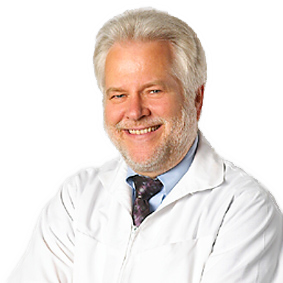Health is not a random occurrence—it is the natural and normal state of the human body. When the body is nourished properly, kept in alignment, detoxified, well-rested, and supported mentally and spiritually, it functions optimally. Disease and dysfunction arise when these natural processes are disrupted—not because the body is drug-deficient.
Unfortunately, much of today’s healthcare system is built on managing symptoms rather than restoring function. This reactive, pharmaceutical-first model often overlooks the root causes of disease and ignores the body's own healing potential.
🔍 The Root Causes of Disease Are Largely Preventable
Most chronic illnesses in the United States are caused by a combination of modifiable lifestyle factors:
- Poor diet and nutrient deficiencies The CDC estimates that poor nutrition is a leading cause of chronic disease in the U.S., contributing to conditions like heart disease, type 2 diabetes, and obesity.¹
- Toxic exposures The World Health Organization reports that environmental risk factors account for nearly 24% of global disease burden.²
- Physical inactivity Sedentary lifestyles are associated with a 20–30% increased risk of all-cause mortality.³
- Poor breathing, lack of rest, and chronic stress Chronic stress has been linked to suppressed immune function, hormonal imbalance, and cardiovascular disease.⁴
Inadequate sleep is tied to nearly every major chronic illness, including diabetes, hypertension, and depression.⁵ - Spinal misalignments and nervous system interference Studies have shown that spinal misalignments can interfere with autonomic nervous system regulation and impair organ function.⁶
Chiropractic adjustments have been documented to improve heart rate variability and reduce sympathetic overdrive.⁷
💊 The Pharmaceutical Illusion
Despite these known causes, we are told that symptom suppression through pharmaceuticals is the solution to disease. But this is not a neutral or harmless approach.
- Drugs typically suppress symptoms, not correct the underlying cause. For example, acid blockers reduce stomach acid but do not fix the reason for reflux—often related to poor diet, hiatal hernia, or nerve dysfunction.
- Multiple drug use increases the risk of adverse effects. According to a study published in JAMA, adverse drug reactions from properly prescribed medications are a leading cause of death in the U.S., resulting in over 100,000 deaths annually.⁸
The CDC reports that adverse effects of medical treatment rank as one of the top ten leading causes of death depending on the year.⁹ - Polypharmacy (use of multiple drugs) is common in older adults and increases mortality risk. Research in The Lancet shows that adverse drug interactions often go undetected until harm has already occurred.¹⁰
🌱 Natural Healthcare Restores Function, Not Just Comfort
In contrast, natural healthcare focuses on restoring optimal function, allowing the body to heal itself.
Natural Approach————————————Mechanism
Chiropractic——————————————-Corrects spinal misalignments to restore nerve flow⁶⁻⁷
Nutritional therapy———————————Provides raw materials for healing and detoxification
Exercise and movement—————————Improves circulation, oxygenation, and resilience³
Stress management———————————Reduces cortisol and supports immune response⁴
Positive mindset/spiritual support————-Shown to enhance outcomes and immune function¹¹
In this model, symptoms improve because the body is actually healing—not just because the signals have been chemically silenced.
🛑 Medicine Has a Role—But It’s Overused
Let’s be clear: modern medicine can save lives. In emergencies, trauma, or infections, drugs and surgery are powerful and often necessary. But the problem arises when this model is applied indiscriminately to non-life-threatening, chronic conditions.
More than 75% of U.S. healthcare costs go toward treating preventable chronic diseases.¹² That tells us our system is treating dysfunction—not creating health.
✅ Conclusion: Healing is Built Into the Body
The body was designed to heal. When we remove interference, provide the right nutrients, support the nervous system, and reduce physical and emotional stress, the body has an astounding ability to repair itself.
Natural healthcare supports that process. Pharmaceuticals suppress it.
For most non-emergency conditions, the safer, smarter, and more sustainable first choice should be natural healthcare. Not because we reject medicine—but because we respect the body's built-in design to heal itself.
📚 References
- Centers for Disease Control and Prevention (CDC). “Chronic Disease Overview.” cdc.gov
- World Health Organization. “Preventing disease through healthy environments.” who.int
- World Health Organization. “Physical Inactivity: A Global Public Health Problem.” who.int
- McEwen, B.S. “Protective and Damaging Effects of Stress Mediators.” New England Journal of Medicine, 1998.
- National Institutes of Health. “Why Is Sleep Important?” nhlbi.nih.gov
- Haavik, Heidi & Murphy, Bernie. “The Role of the Subluxation in Neurologic Dysfunction.” Journal of Manipulative and Physiological Therapeutics, 2007.
- Zhang, J. et al. “Effect of chiropractic care on heart rate variability.” Journal of Chiropractic Medicine, 2006.
- Lazarou J, et al. “Incidence of adverse drug reactions in hospitalized patients.” JAMA, 1998.
- Centers for Disease Control and Prevention (CDC). “Leading Causes of Death.” cdc.gov
- Pirmohamed, M. et al. “Adverse drug reactions as cause of admission to hospital.” BMJ, 2004.
- Koenig, H.G. “Religion, Spirituality, and Health: The Research and Clinical Implications.” ISRN Psychiatry, 2012.
- CDC. “Chronic Diseases: The Leading Causes of Death and Disability in the United States.” cdc.gov

